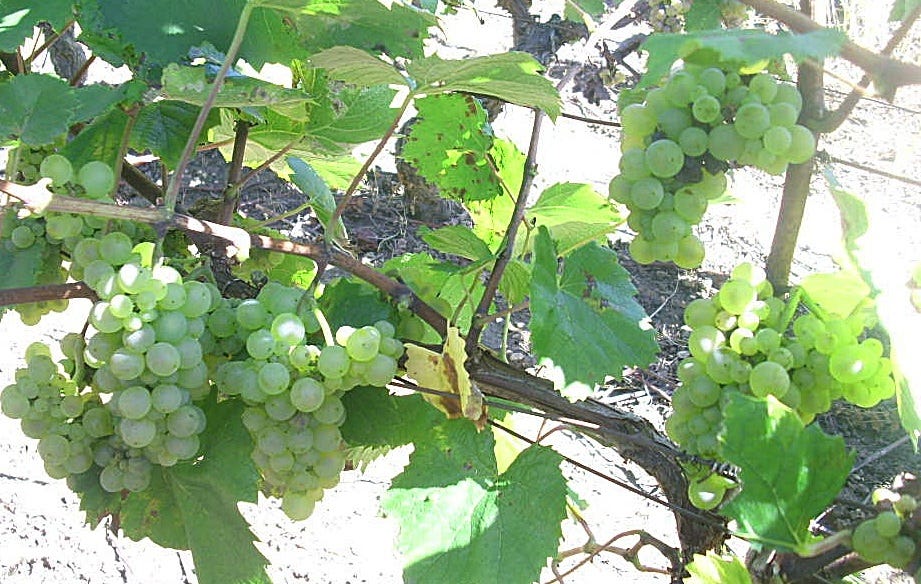When people think of Burgundy wines, Chardonnay and Pinot Noir dominate the conversation. Yet tucked into corners of this famous region grows a grape that has long played a supporting role, occasionally overlooked but increasingly appreciated: Aligoté. This white grape may not have the glamour of its golden neighbor Chardonnay, but it carries a crisp personality and an enduring tradition worth knowing.
Origins and History
Aligoté is believed to have originated in Burgundy, where written references date back to the 18th century. It is a natural crossing of Pinot Noir and Gouais Blanc, the latter being a prolific “parent” grape responsible for several European varieties. Historically, Aligoté was planted in less prestigious vineyard sites, often on higher, cooler slopes where Chardonnay struggled to ripen. For generations, it served as a workhorse grape, producing simple, tangy wines that locals drank young or blended into sparkling Crémant de Bourgogne.
Style and Characteristics
At its best, Aligoté offers a bright, linear profile. It is typically light-bodied with elevated acidity, making it refreshing and food-friendly. Flavors lean toward green apple, citrus zest, white flowers, and sometimes a faint nuttiness with age. Unlike Chardonnay, which can take on opulence from oak and malolactic fermentation, Aligoté is usually made in a straightforward, unoaked style to preserve its crispness. The result is a wine that is less about plush texture and more about clarity and refreshment.
Regional Expressions
The spiritual home of Aligoté remains Burgundy, where the appellation Bourgogne Aligoté AOC was created in 1937 to protect and promote the grape. Within this, the Bouzeron AOC, established in 1997, is dedicated solely to Aligoté. Bouzeron’s wines, particularly from producers like Domaine A. & P. de Villaine, show that this grape can rise above its reputation for simplicity when planted on the right soils and given careful attention.
Beyond Burgundy, Aligoté has spread to Eastern Europe, particularly Bulgaria, Romania, Ukraine, and Russia, where it became widely planted in the 20th century. In these countries it was often used for blending, though some varietal bottlings exist. More recently, small plantings in Oregon, California, and even England have surfaced, offering new interpretations of its bright style.
Cultural Role
Perhaps Aligoté’s most enduring cultural contribution is its role in the Kir cocktail. The drink—white wine with a splash of crème de cassis—was popularized in Dijon in the mid-20th century, when the local mayor, Félix Kir, promoted it as a regional specialty. At the time, Aligoté was seen as a rather tart wine on its own, so the cassis liqueur softened its sharpness. Today, Kir remains a symbol of Burgundian conviviality.
Contemporary Reputation
In recent decades, Aligoté has benefited from a reassessment. As Chardonnay prices and prestige continue to climb, wine drinkers seeking value and freshness are turning to this once-humble grape. In the hands of quality-focused growers, Aligoté can be nuanced, mineral-driven, and surprisingly age-worthy. While it will likely never unseat Chardonnay as Burgundy’s crown jewel, it has secured a loyal following and a place in the global conversation about distinctive, characterful white wines.
Image Credit: https://wikipedia.org
_ _ _
© CHURRASCO PHUKET STEAKHOUSE / ALL RIGHTS RESERVED
Reprinting, reposting & sharing allowed, in exchange for a backlink and credits
Churrasco Phuket Steakhouse serves affordable Wagyu and Black Angus steaks and burgers. We are open daily from 12noon to 11pm at Jungceylon Shopping Center in Patong / Phuket.
We are family-friendly and offer free parking and Wi-Fi for guests. See our menus, reserve your table, find our location, and check all guest reviews here:
https://ChurrascoPhuket.com/
#Churrascophuket #jungceylon #phuketsteakhouse #affordablewagyu #wagyu

